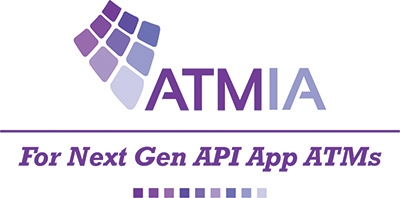
A New Future for ATMs by Mike Lee, CEO, ATMIA At the start of 2019, put aside any natural scepticism and reinvigorate your belief in the capacity of ATM technology to adapt to a digital era which is disrupting the high street, including bank branches and retail brands, across the globe. There is no need to repeat the obvious truth we see in the news virtually every week that the traditional way of doing retail is being upended by the business models and technologies of on-demand online services, including apps for just about everything from an Uber taxi to a take-away pizza (and everything in-between). No wonder, then, that Amazon's Jeff Bezos has recently become the richest man in modern history. And no wonder that Netflix has become for the first time a major contender for Oscars. But I wonder if it is even possible to quantify all the losses to traditional retailers caused by the rise of Amazon alone? How many personal and corporate bankruptcies have resulted from the most massive technological disruption ever caused to society? Thank the stars that the ATM industry is not going to be left behind by all this change that is on a scale that defies belief. About three years ago, ATMIA established a few committees looking to prepare the way for the 2020 migration to W10. One such committee, the Next Gen ATM Architecture Committee, inspired by Peter Kulik, began to construct a whole new vision for the future of ATMs. What became the API App Model for ATMs was soon born. It was formulated into an RFI which was sent by ATMIA, often under NDA, to all the major vendors and suppliers in the industry. Their feedback confirmed and vindicated the RFI's vision of an API App model for ATMs which subsequently became the signed-off blueprint for next gen ATMs. Over 200 companies, including 59 financial institutions and numerous independent ATM deployers (IADs), have joined the Consortium, with significant participation on the various committees and subcommittees. We are focusing in 2019 on the Implementation Guide for the technical implementation of the blueprint for the future of ATMs. The Standards & Technical Committee will oversee the work done by three technical, functional and certification working groups as the industry looks to develop new standards for global interoperability. Please see our Consortium for Next Generation ATMs Clarification Statement v.2.0 to understand what we intend to achieve in the year and how. Here's an extract for you:
We will only focus on the envisaged next gen ATM self-certification system in 2020. The bottom line is that we urgently need to connect ATMs to the consumers' mobile phone as the principal medium for transacting, instead of the card. We need to create global interoperability for next gen App-based ATMs in a procompetitive manner and we need to encourage and promote innovation across our 50 year-old industry. The old ATM, like the traditional retail sector, will be superannuated (i.e. no longer used as extensively as in the past) unless we create an ATM fit for purpose for the mobile digital age and the coming Internet of Things (IoT) that will dominate society and the economy for a couple of decades. Why invest energy, money and time in the past when the future is a much better strategic space? To join the Consortium for Next Gen ATMs, email me at [email protected].
|
